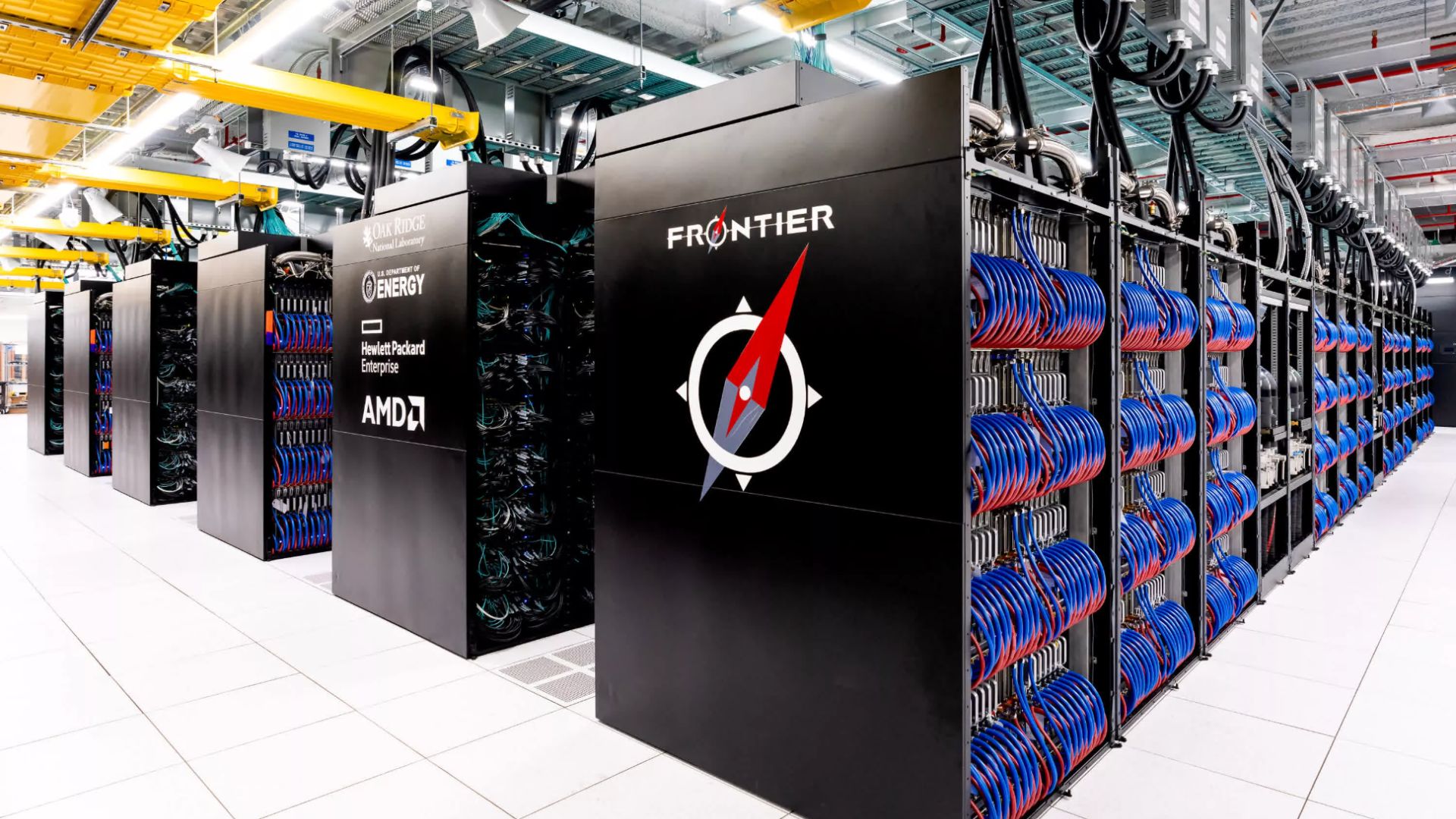
ANSYS, a prominent provider of simulation software, utilized its Fluent tool to model a highly intricate turbine system for Baker Hughes, an energy technologies firm. This study was conducted to evaluate advanced gas turbines designed to boost efficiency.
In the simulation, there was a significant reduction in the time needed for completion. Previously, it took 38.5 hours when executed with 3,700 CPU cores. But utilizing 1,024 AMD Instinct MI250X accelerators along with AMD EPYC processors in Frontier cut down the duration to just 1.5 hours. This represents an improvement where the process became approximately 25 times quicker compared to before.
By transferring the workload from conventional CPU cores to AMD Instinct GPUs, Ansys managed to cut down the simulation time by a remarkable 96 percent. This shift is viewed by the company as a significant advancement in speeding up computational fluid dynamics (CFD) tasks.
More on Frontier supercomputer
Through this experiment, Frontier emerged as the world's first supercomputer to achieve exascale-level performance. It operates using AMD Epyc and Instinct processors for its CPUs and GPUs. This development has gained momentum particularly against the backdrop of Nvidia’s efforts to dominate the data center GPU marketplace.
Ansys and Baker Hughes harnessed the immense computational capabilities of the supercomputer for their experiment. Consequently, the supercomputer successfully executed a 2.2-billion-cell simulation of an axial turbine stator, which aided in comprehending the flow patterns and turbulent behaviors involved.
Frontier, once the world’s fastest The supercomputer was the first to reach exascale performance. It replaced the Summit supercomputer, which was formally retired in November 2024. Shortly after, the El Capitan supercomputer at Lawrence Livermore National Laboratory overtook Frontier’s speed record.
Both systems utilize AMD GPUs; Frontier comes with 9,408 AMD EPYC processors along with 37,632 AMD Instinct MI250X accelerators, whereas El Capitan includes 44,544 of the more advanced AMD Instinct MI300A accelerators.
The Impact
Following the success of this simulation, Ansys has praised AMD’s Instinct GPUs for reducing the simulation time. The firm states that this achievement could significantly accelerate design iterations and provide more precise performance predictions for industrial systems.
Ansysis views GPU-based configurations as a substantial chance for growth among smaller and medium-sized companies. These firms could achieve notable improvements in simulation efficiency and scalability even without investing in extensive high-performance computing systems. As per Ansys, enterprises can speed up intricate computational fluid dynamics tasks without requiring large infrastructures by utilizing Fluent with GPU systems.
Through the use of advanced AMD Instinct GPUs, we have pushed high-fidelity computational fluid dynamics (CFD) simulations to new heights," stated Brad McCredie, AMD’s Senior Vice President for Data Center Engineering. "This partnership highlights how leading-edge supercomputing can address complex engineering problems, paving the way for advancements in efficiency, sustainability, and innovation.
At present, Baker Hughes is employing the Ansys Fluent GPU solver on the Frontier supercomputer to advance the creation of its upcoming batch of turbine engines. believes that The potent mix of contemporary GPUs along with sophisticated CFD software could revolutionize numerous intricate design and industrial processes.
